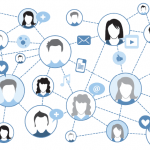I knew I was about to be schooled.
That’s what I thought when I first started to read the Twitter feed of Erin D. Michos, MD, MHS, an associate professor of medicine in the Division of Cardiology at Johns Hopkins University, Baltimore.
I have a Twitter account, but as a general rule, I use it just to stay informed. In Twitter parlance, I lurk. Lurking is the verb used to describe someone who has joined Twitter, but does not tweet. In the Twitterverse, I am a consumer, not a producer.
Twitter is better off without me. I am old enough that I use more than my thumbs to type, and most of my thoughts don’t fit into 280 characters. There is a certain paucity of language that makes tweeting its own dialect, and I am far from fluent. Besides, I think Twitter has enough people sharing their thoughts and not enough people just sitting and listening, so I try to restore balance to the cosmos by staying out of the fray.
This particular day, I was reading a thread started by Harriette Van Spall, MD, MPH, associate professor of medicine in the Division of Cardiology at McMaster University, Hamilton, Ont., Canada. She tweeted: “In [a] cross sectional analysis of 181 medical conferences in the US and Canada, the proportion of female speakers [from] 2013 to 2017 has increased from 25 to 34%.”1
I think Dr. Van Spall meant that to be good news, but Dr. Michos replied: “Women speakers remain underrepresented at medical conferences. Pay attention, conference organizers! Think broadly, beyond the first names (usually men) that come to mind.” She continued, “At a minimum, representation should reflect the field. So even in cardiology, where women are only 25%, statistically there should be at least 1 in 4 on the panel who are women. … The larger the size of the all-male #manel, the more uncomfortable.”2
Manel?
New Word, Old Problem
The Oxford Dictionary’s blog on neologisms notes the following: “The term manel, used to refer to an all-male panel of speakers, has recently emerged to join the ranks of the ever growing lexicon of words that are formed by blending the word man with an existing word. … Conceptually, the reason why a panel would be organized in the first place, whether on a conference, on cable news or as part of a legislative session, is to ensure a diversity of opinions and perspectives [is] brought to the issue up for discussion. Obviously, there are many ways in which panels can fail to achieve this goal, not the least of which is the failure to actually assemble a diverse group of panelists. The term manel … has become a useful way to take note of a circumstance in which men may not realize that something they’re involved in has the effect of marginalizing women.”3
Manel is a new word, but the under-representation of women in the higher echelons of academia is not a new problem. For example, 27% of critical care physicians in the U.S. are women. From 2011–2017, 15% of articles on critical care published in high-impact journals (such as The New England Journal of Medicine, JAMA and the American Journal of Respiratory and Critical Care Medicine) had a woman as the first or last author. Despite this, when you look at the composition of critical care task forces convened during the same time period, women physicians accounted for only 7% of the panelists.4
Manels are an issue across disciplines, not just in internal medicine. In 2018, investigators from Rice University created a database of everyone asked to speak by the top 50 universities in the U.S. (as judged by U.S. News & World Report) in one of six disciplines: biology, bioengineering, political science, history, psychology and sociology. The investigators found men were invited to give talks roughly twice as often as women. The observation that men give more talks than women held true across three academic ranks and six different specializations.
Why does this occur? The authors posit: “Seemingly innocuous schemas or stereotypes that people hold about men and women give rise to substantially different expectations …, which, in turn, produce lingering disparities. The biases may not be conscious, in that individuals may be unaware of their schemas and stereotypes. However, these same individuals often serve as gatekeepers or individuals who make decisions about who will enter and advance in the workplace. Gatekeepers may inadvertently restrict women from fulfilling their workplace potential.”5


